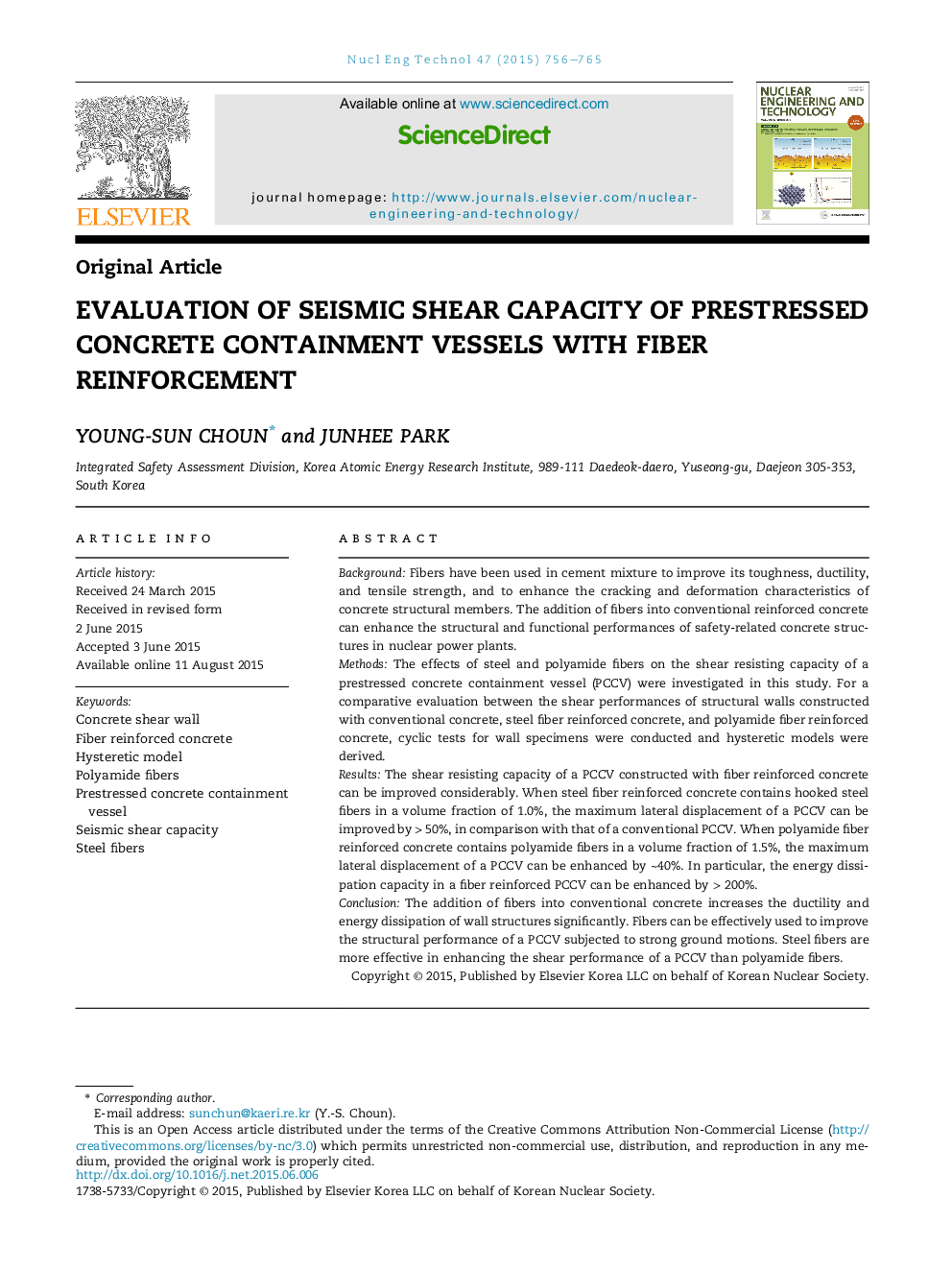| Article ID | Journal | Published Year | Pages | File Type |
|---|---|---|---|---|
| 1740120 | Nuclear Engineering and Technology | 2015 | 10 Pages |
BackgroundFibers have been used in cement mixture to improve its toughness, ductility, and tensile strength, and to enhance the cracking and deformation characteristics of concrete structural members. The addition of fibers into conventional reinforced concrete can enhance the structural and functional performances of safety-related concrete structures in nuclear power plants.MethodsThe effects of steel and polyamide fibers on the shear resisting capacity of a prestressed concrete containment vessel (PCCV) were investigated in this study. For a comparative evaluation between the shear performances of structural walls constructed with conventional concrete, steel fiber reinforced concrete, and polyamide fiber reinforced concrete, cyclic tests for wall specimens were conducted and hysteretic models were derived.ResultsThe shear resisting capacity of a PCCV constructed with fiber reinforced concrete can be improved considerably. When steel fiber reinforced concrete contains hooked steel fibers in a volume fraction of 1.0%, the maximum lateral displacement of a PCCV can be improved by > 50%, in comparison with that of a conventional PCCV. When polyamide fiber reinforced concrete contains polyamide fibers in a volume fraction of 1.5%, the maximum lateral displacement of a PCCV can be enhanced by ∼40%. In particular, the energy dissipation capacity in a fiber reinforced PCCV can be enhanced by > 200%.ConclusionThe addition of fibers into conventional concrete increases the ductility and energy dissipation of wall structures significantly. Fibers can be effectively used to improve the structural performance of a PCCV subjected to strong ground motions. Steel fibers are more effective in enhancing the shear performance of a PCCV than polyamide fibers.
